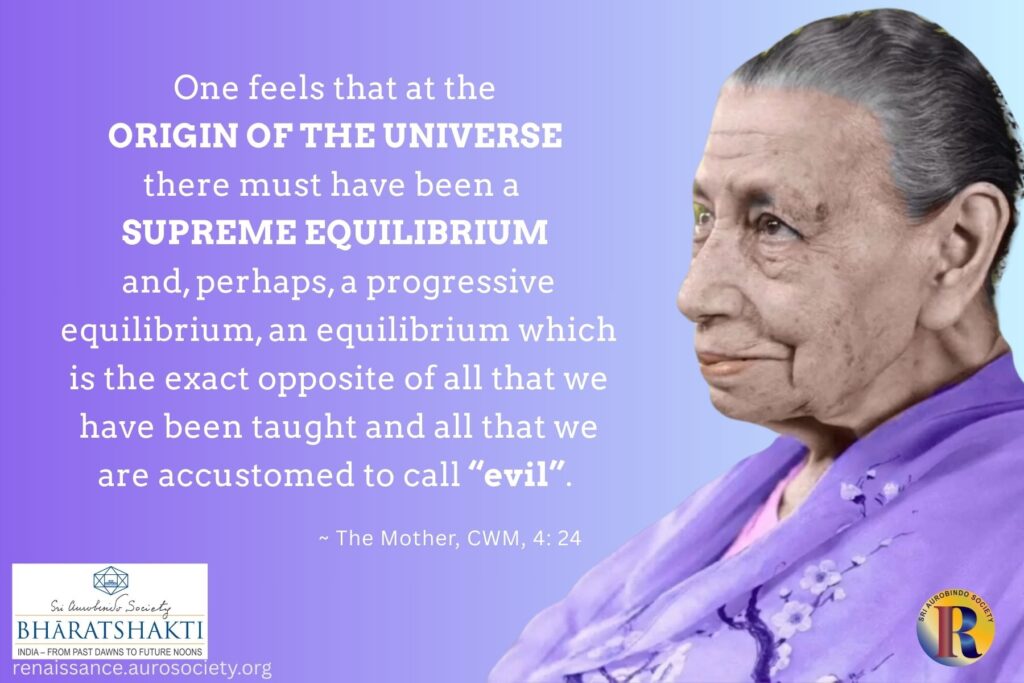Editor’s note: The author, an educator who is deeply interested in applying the Mother’s teachings of Integral Education in her classroom setting, shares a few reflections based on her years of experience and also gives some practical tips that can be useful for teachers looking for ways to help their students develop greater concentration ability.

At the Sri Aurobindo International Center of Education, Pondicherry, once a student complained to the Mother that they have a lot of work to do and there is always lack of time. The Mother told the child that he could accomplish the work of one hour in ten minutes if he is able to concentrate.
When I read this as a student, I was impressed by the fact that if I knew how to concentrate, I would not only be able to complete all my pending work but will also get time for my favourite activities. And from there began my journey of understanding the power of concentration and how to acquire it.
The spelling as well as the general meaning of this word were easy. One just has to concentrate all the senses, mind, and one’s attention towards the work in hand. And with this shining discovery, I sat to concentrate on my homework with confidence.
A few seconds later, I became aware of itching in my body. Then my mind flew towards the aroma emanating from the kitchen. Then I started thinking about my future, and lo…. I forgot, I had to concentrate. I brought back my mind to the task which I was doing, and soon came the yawn. Interestingly, I started feeling sleepy, hungry, and itchy – all at the same time. Slowly I realized that this concentration is something I really needed to learn and master to the extent so that it would become a natural process.
***
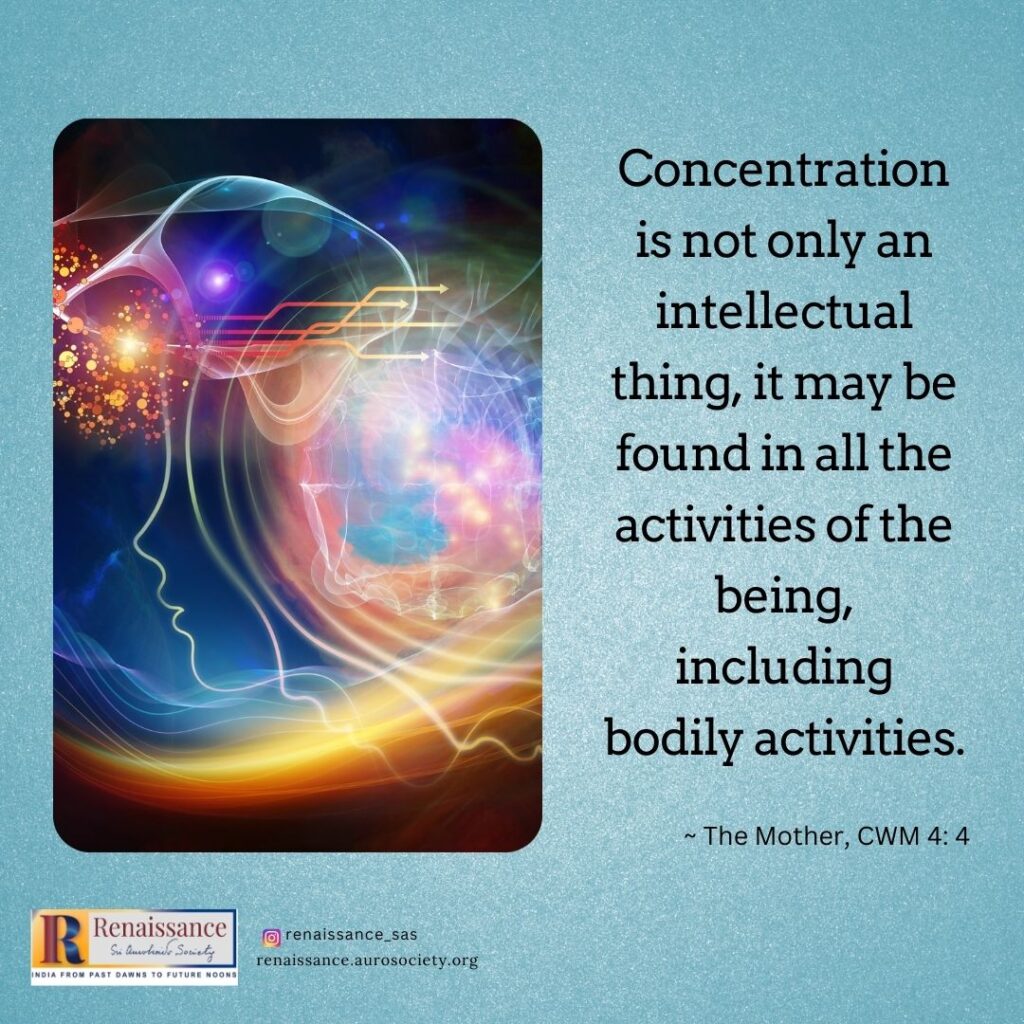
That was then. Today I am an educator and an educational administrator working with students of all age-groups. And over the past several years of working in educational field, I have come to realize that the one art (and science) which is lacking in many, perhaps most, students and even a large number of teachers, is the art of concentration.
Surely, I have also observed that concentration indeed being indeed the key to the success achieved by some of the students. I have also seen that the students who are taught to gather all their energies towards their task excel and attain more of their goals in life.
The process of attaining mastery over the art of paying attention to the work in hand is not easy. But it is one of the most important habits that must be inculcated in the students since the beginning of their formal education. The earlier, the better. Though it must be added that one can start developing concentration at any age whenever one realizes the importance of this power in life.
Bringing the best from the past
Concentration is not a new word. Our ancient Rishis and Munis have valued this art so much that we have in India sciences developed to master the power of concentration. Over the course of time we forgot the value of our age-old practices and ran with the modern trends in education which often ended up in a greater dispersion of mind rather than concentration.
Fortunately, we are beginning to see a change in the larger scenario. A realization is dawning that the age-old practices and techniques on how to develop concentration must be part of the overall educational experiences of the child. The National Curriculum Framework for School Education, 2023 speaks about the Importance of Concentration.
The Taittriya Upanishad says that the secret of learning lies in the power of concentration in thought. The science of Yoga is based on the process of concentration and the methods by which concentration can be achieved on the object of knowledge in order that the contents, powers and states of knowledge concerning that object can be realized by the seeker.
Sri Aurobindo also lays central importance on concentration and speaks of four principal methods by which concentration can be attained – meditation, contemplation, witnessing the passage of thoughts as they pass through the mind, and quietening and silencing the mind.”
~ NCF, 2023, p. 76
***
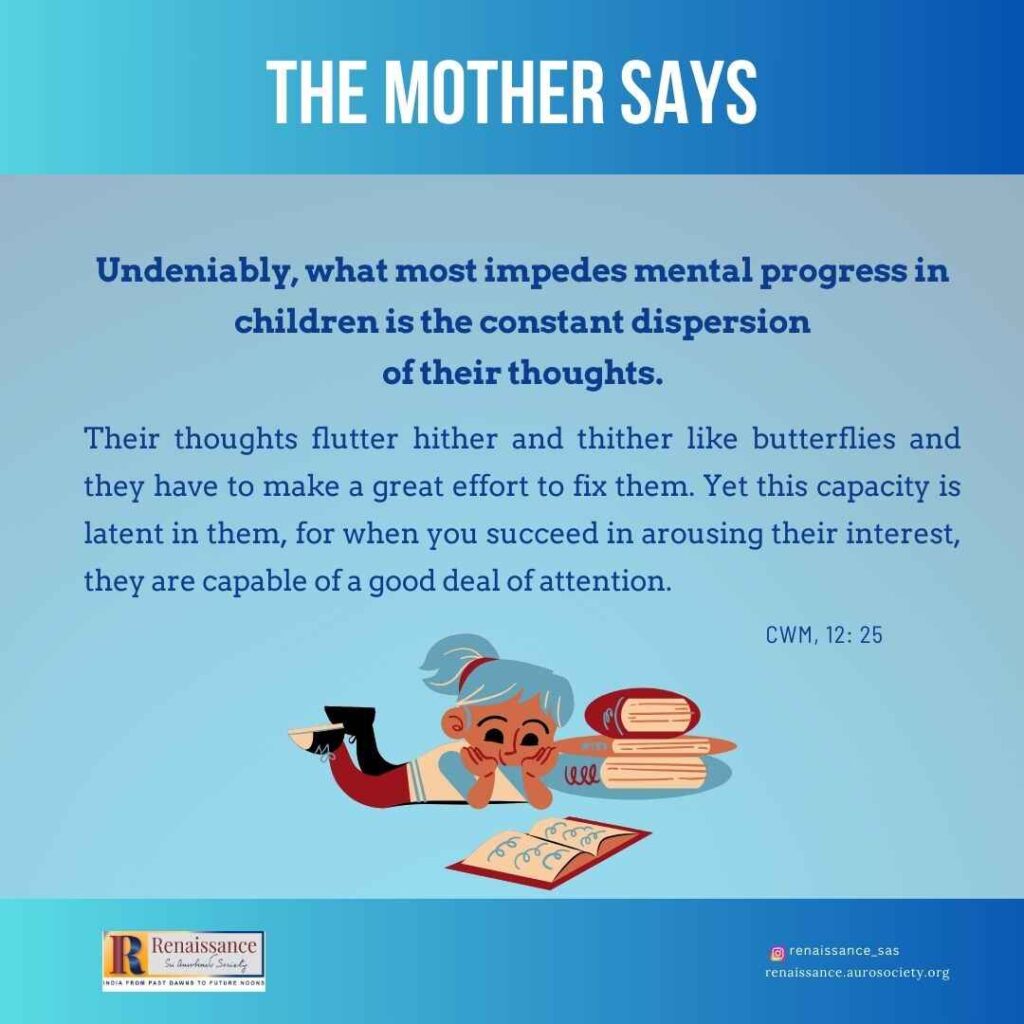
It is indeed a welcome change that our policy makers and governmental bodies are recognising the importance of focusing one’s attention. In highlighting the importance of Panchakosha Vikas, the development of all five sheaths of the being, the NCF speaks of the development of the Manomaya Kosha and Vijnanmaya Kosha, which is about the development of mind and intellect. Concentration has an important role to play here. The NCF recommends designing of specific activities to enable the development of intellect in children, which may include tasks to facilitate retention of energy, develop the power of concentration, observation and experimentation.
The key question remains – how to help students learn and practice this art of concentration. Let me share a few of my observations and experiences in this regard. I hope that these ideas will serve as a guide for all those who are concerned with the field of education, be the parent, the teacher, or the child.
The Mother has said that,
. . . if you are able. . . to concentrate your attention on things that seem to you of very little interest,. . . if you take one of them and try to understand it – not learn it by heart. . . – but try to understand the thought behind the words: and try to find out your own formula for the things; that is so interesting.
~ CWM, Vol. 5, p. 126
This statement gives us a clue. Not only the children but grown-ups also love to do what we like the most. So it is important that we are able to create interest in all that what we must do or study – regardless of our preferences.
Make the children connect with what they are learning
As a teacher, I apply this method with my students. For example, when teaching a specific chapter or explaining a specific concept, I try my best that the students are able to connect deeply with some of the situations being explored in the text. They are encouraged to identify with a specific character in the story in some way, perhaps by putting themselves in the shoes of the character or the author of the story. Or if I am explaining some concept, I try different ways to help students enter into the deeper meaning and idea behind the concept.
It is like the Chinese Shan shui painting where all the elements required to complete a picture are brought together in such a way that the artist becomes the art itself and the viewers are invited to enter into the essence of the art.
Today, online search engines have made in-depth research easy for everyone. Knowing a topic in depth and exploring it from various perspectives help me a lot to connect with my students in their own way and to sustain their interest with my varied explanations. This intense preparation work also helps me to devise appropriate teaching strategies for different learners in my classroom. A comprehensive and engaging presentation of the topic by the teacher also evokes curiosity and interest in the learners.
With the younger kids, I use one more trick. I ask them to bring their attention on themselves. For example, I ask them to touch their hands and feel the touch of their skin, really feel it. Slowly through different sensory activities, I make them realize that concentration is a magic wand. And that they are the magicians with the power to bring it to whatever they want.
I have also observed that children generally have an inclination and also the capacity to complete the task given by the teacher in class, especially if it is an interesting activity. I take advantage of this. Slowly the students learn that they can not only complete their work in time, but they can also help out their friends. This is how they gradually develop their ability to concentrate – something that can be highly useful for them in all stages of their lives.
Help the children understand, not just memorize
The Mother has also stressed upon the fact that understanding should be stressed much more than memorizing a concept.
One knows well only what one has understood. Things learnt by heart, mechanically, fade away little by little and finally disappear; what is understood is never forgotten.
~ CWM, Vol. 12, pp. 25-26
Here comes the responsibility of the teachers and parents to explain the ‘why’ and ‘how’ of things to a child and help develop healthy curiosity and a habit of life-long learning in them.
In my classes I apply this in an interesting manner. I devote last five minutes of the class period to a question-answer game. This is when those students who were most concentrated during the lecture are given a chance to play a game with the teacher, called “Aapki Adalat Mein”. This motivates them to focus more during the class.
The students are curious by nature and it is important to give them the opportunity to ask questions and help them find answers to their questions through research and discussion. I end my lesson with an interesting twist and on the same day or the next day the students are asked to come prepared with questions. The questions may vary from general ones to such questions that may deem impossible to an adult mind.
Sometimes the students play this game among themselves and the teacher may become an observer, and at other times she may participate in the game. The objective behind this game is to evoke the sense of search and in-depth study of the topic. This motivates them to focus more during the class. They start taking interest in the chapter since now it is not rote learning or cramming up. Instead they get a sense of freedom with self-discovery and develop search for knowledge in themselves.
***
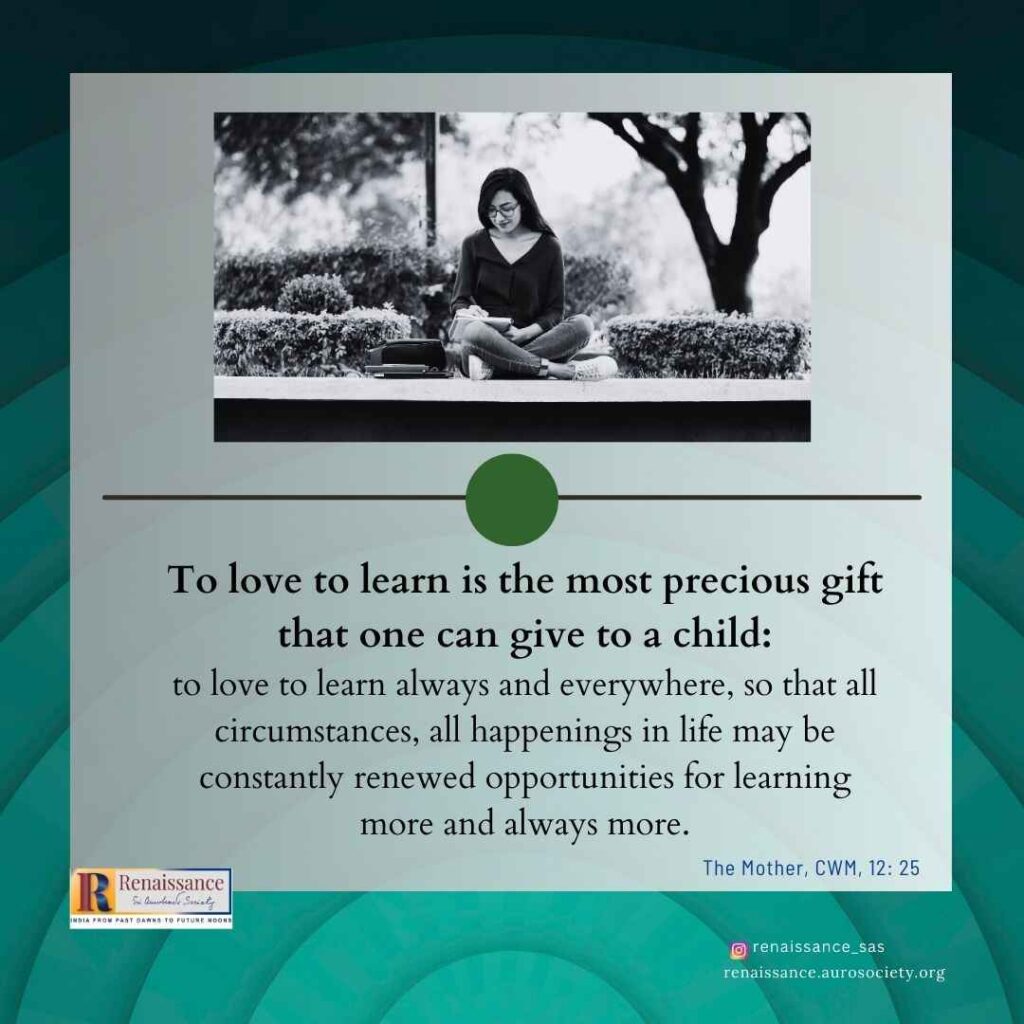
***
Organization of thoughts
Another method that I apply concerns the power of organizing not only things but also one’s whole thought process. While it is generally not an easy task for the grown-ups it can be easily learnt easily by students. Organization has great power. This is a fact which we all know but only a few are aware that if this power is inculcated it can lead to a mastery in concentration.
Asking students to apply their speculative and imaginative thinking they can be taught to classify and organize their thoughts in the same manner as they organize things in their rooms/homes. Each one has its own separate place; just like the physical objects, one’s thoughts can also be kept in the mind in an organized manner on their separate shelves.
This can become an interesting activity where the teacher can give examples of different kinds of thoughts and how to place them neatly. And the students are expected to pay attention to only a particular shelf when they need to focus. For example, when it is time to study, simply open the shelf where you have placed thoughts concerning your aims of progress, of becoming a better student, of paying more attention in class, etc.
This activity can be seen as an application of what the Mother emphasizes — having a central ideal around which all related thoughts or ideas can be surrounded.
***
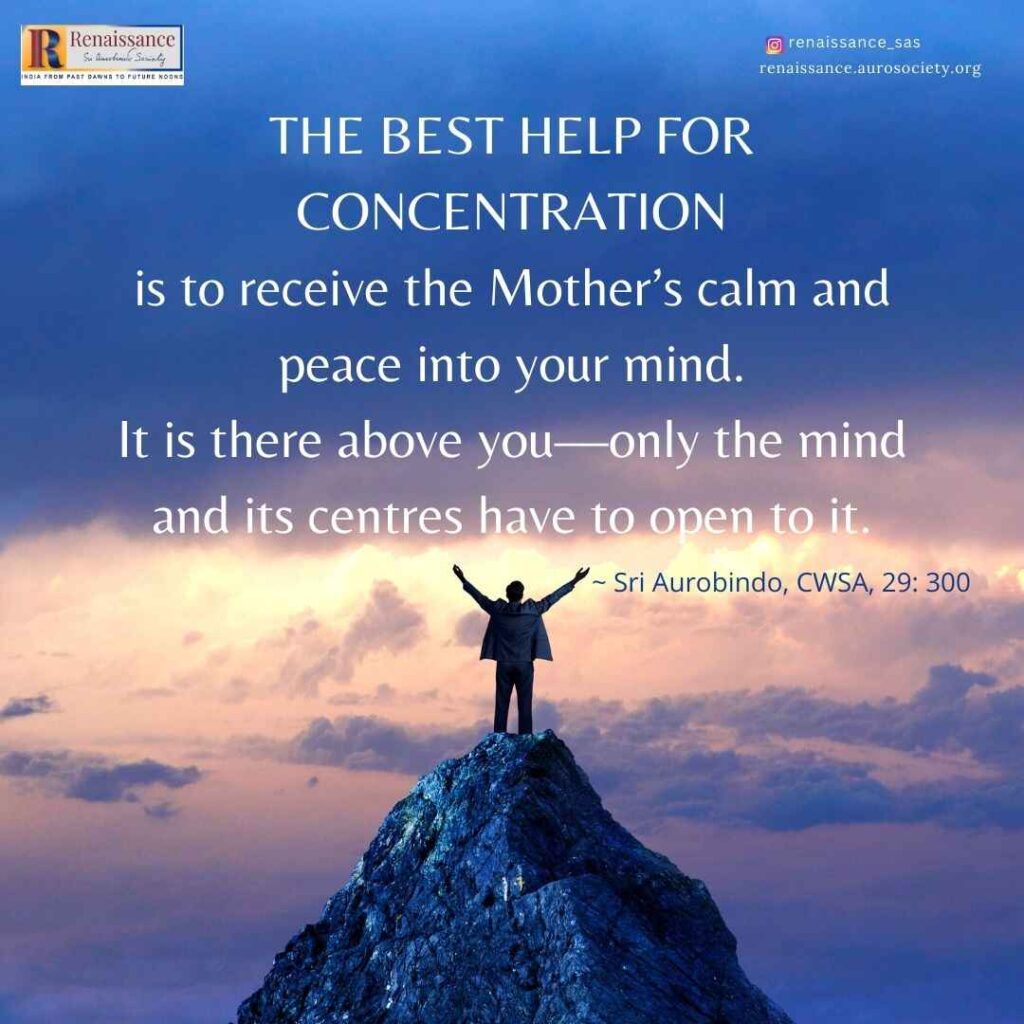
***
Find the peace and calm within
It must be emphasised that all these practices of concentration can become more effective when one knows how to establish silence and peace in oneself. Hence it is imperative to introduce some practices to help children experience silence and peace. For instance, before beginning the class I ask my students to close their eyes for a few moments and chant ‘OM’ or any sacred sound or mantra of their choice. This is followed by my setting an intention for the whole lecture in front of the students. This opening practice provides a clarity to the students about what to expect in the class and also makes them calm and focused.
But this can be achieved only when the person leading the choir is himself calm and peaceful because it is important to understand that the power of concentration is a radiating energy that is contagious in nature. That is why, before entering the class, I set my intentions for the lecture and make sure that I stay calm and focused, no matter what. It helps me to handle my class effectively and also sets an example for the students.
Be in the moment
Instead of following rote teaching and learning methods, teachers should use a variety of techniques keeping in sync with the tech-savvy generation. With plenty of distractions at every corner, it is highly necessary that mindfulness and the art of being in the present moment are taught to children at a young age.
When one focuses on what one has done, what one is doing and what one is going to do, all at the same moment, one loses one’s energy threefold. It is more beneficial to stay in the present moment. In my class I speak of a motto – stay in the present. I ask my children to shut all other doors of their mind except one, that is, the one opening into the present. To my happy surprise, I have found that such kinds of imaginative techniques actually help in developing concentration.
***
It took me years to understand how to develop concentration, and I am still learning. I have found the ability to concentrate to be of great help under all circumstances. I encourage all educators to grow in their own capacity to concentrate, use different methods that work for them. And through their example help their students develop their concentration capacity. This is one of the central ideas of a sound mental education. If Integral Education is the lighthouse, art of concentration is the torch.
When one has learned to silence the mind at will and to concentrate it in receptive silence, then there will be no problem that cannot be solved, no mental difficulty whose solution cannot be found.
~ The Mother, CWM, Vol. 12, p. 29
Read more by the author HERE.
~ Design: Beloo Mehra



